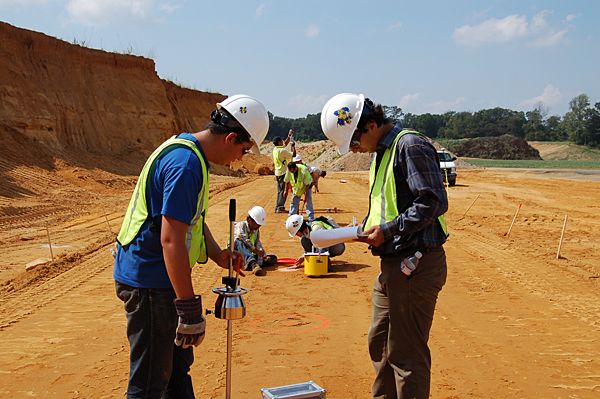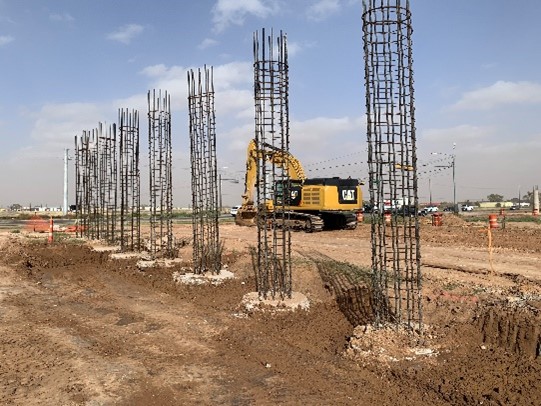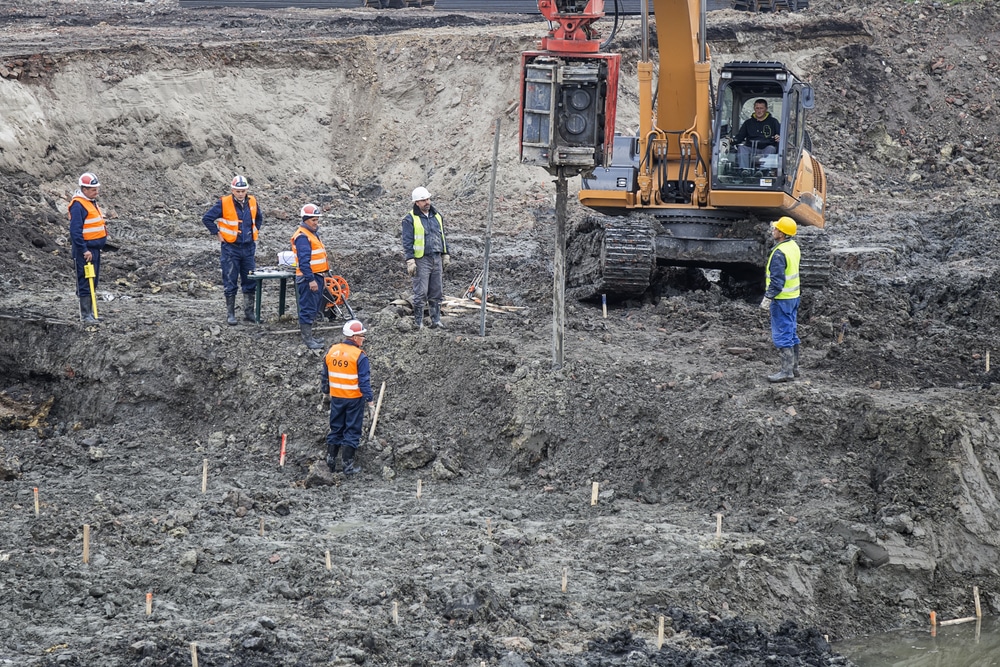Geotechnical Geologist Providers for Accurate Soil and Rock Analysis
How Consulting Engineers Enhance Geotechnical Design Projects: Insights Into Their Expertise, Techniques, and Collaborative Approaches
Consulting engineers are critical in boosting geotechnical engineering projects, using their specialized understanding to navigate the intricacies of subsurface problems. Their joint strategies foster communication amongst diverse job stakeholders, inevitably shaping the task's trajectory.
Duty of Consulting Engineers
The proficiency of speaking with engineers in geotechnical engineering is fundamental to the effective implementation of construction projects. These experts play a pivotal duty in examining dirt and rock properties, which are crucial factors affecting style and building and construction decisions. By performing comprehensive website examinations, seeking advice from designers collect important data that educates the design process, ensuring projects are constructed on stable and suitable ground.
Consulting engineers likewise provide very useful insights right into danger administration (geotechnical geologist). They determine prospective geotechnical hazards, such as landslides, soil liquefaction, and negotiation problems, enabling stakeholders to apply reliable reduction techniques. Their experience aids in optimizing structure designs, which can result in considerable expense savings and improved safety
Moreover, seeking advice from engineers act as an important link in between project owners, engineers, and service providers. Their ability to translate complicated geotechnical data right into workable recommendations promotes collaboration and helps with informed decision-making throughout the job lifecycle. This multidisciplinary technique not just improves task performance however additionally makes certain compliance with governing criteria and finest practices.
Trick Techniques in Geotechnical Design

One primary methodology is website investigation, which entails carrying out area examinations and lab evaluations to gather information on subsurface conditions. Techniques such as Standard Penetration Screening (SPT) and Cone Infiltration Screening (CPT) are commonly utilized to examine soil stratigraphy and toughness. Furthermore, geophysical approaches, consisting of seismic and electrical resistivity studies, supply non-invasive means to evaluate subsurface attributes.
Another important approach is numerical modeling, which allows engineers to mimic various scenarios and predict how soil-structure interactions will certainly act under various loading conditions. Finite Element Evaluation (FEA) is an usual technique utilized in this context.
Additionally, the style of foundations, retaining structures, and earthworks counts greatly on these approaches - geotechnical geologist. By integrating advanced analytical devices with field data, speaking with engineers can create customized services that address specific task difficulties, ultimately adding to the stability and safety and security of construction tasks
Significance of Soil Evaluation
Soil analysis acts as a foundational component in geotechnical engineering, giving vital understandings into the physical and chemical residential properties of soil essential for efficient building and construction planning. Comprehending soil attributes is critical for establishing its load-bearing ability, drain actions, and capacity for negotiation or instability. Thorough soil investigations, including tasting check and laboratory testing, aid determine criteria such as soil kind, dampness material, density, and official statement shear stamina.
These analyses notify the option of proper building and construction techniques and products, eventually influencing task safety and durability. Natural dirts might call for different foundation designs compared to granular soils, necessitating tailored engineering services. Dirt evaluation help in recognizing impurities that can present threats to human health and wellness or the atmosphere, enabling for the advancement of mitigation strategies.
Incorporating dirt evaluation right into the onset of project growth assists to lessen unanticipated difficulties, guaranteeing that engineers can anticipate and resolve possible problems before they escalate. By developing a detailed understanding of the website conditions, speaking with engineers can maximize style efficiency and reduce prices, consequently enhancing the total success of geotechnical design projects.
Joint Techniques in Projects
Effective geotechnical jobs frequently pivot on collective methods that combine diverse competence from different self-controls. Efficient partnership among consulting designers, geologists, ecological researchers, and building specialists is important for attending to complex obstacles and maximizing job results. By leveraging the unique abilities and expertise of each group member, projects can take advantage of an alternative understanding of the site conditions, governing needs, and design constraints.
Normal interaction and interdisciplinary meetings assist in the sharing of understandings and promote a society of teamwork. These collective initiatives allow the recognition of potential threats early in the task lifecycle, permitting prompt mitigation methods. In addition, including feedback from stakeholders, consisting of local neighborhoods and governing firms, guarantees that all viewpoints are taken into consideration, improving job approval and conformity.
In addition, the assimilation of advanced technologies, such as Geographic Details Systems (GIS) and Structure Information Modeling (BIM), more boosts collaboration. These devices enable the real-time sharing of data and visualization of geotechnical problems, promoting educated decision-making. Ultimately, a collective approach not just improves project implementation but additionally lays the foundation for cutting-edge options to complex geotechnical design obstacles.
Effect On Project End Results

Consulting designers utilize advanced methods such as threat assessment and anticipating modeling, which enhance the accuracy of task forecasts. Their capability to integrate innovative modern technologies, like geotechnical instrumentation and data analytics, better refines the layout and building and construction procedures. As a fantastic read a result, jobs experience boosted performance, minimized prices, and reduced delays.
In addition, fostering efficient communication and collaboration amongst staff member improves problem-solving abilities. When difficulties arise, an unified front allows for speedy recognition of services, avoiding possible obstacles. Inevitably, the joint efforts of seeking advice from designers add to better outcomes, guaranteeing that jobs satisfy both regulative requirements and customer assumptions.
Final Thought
